Protein Gap
Future Of Animal Protein
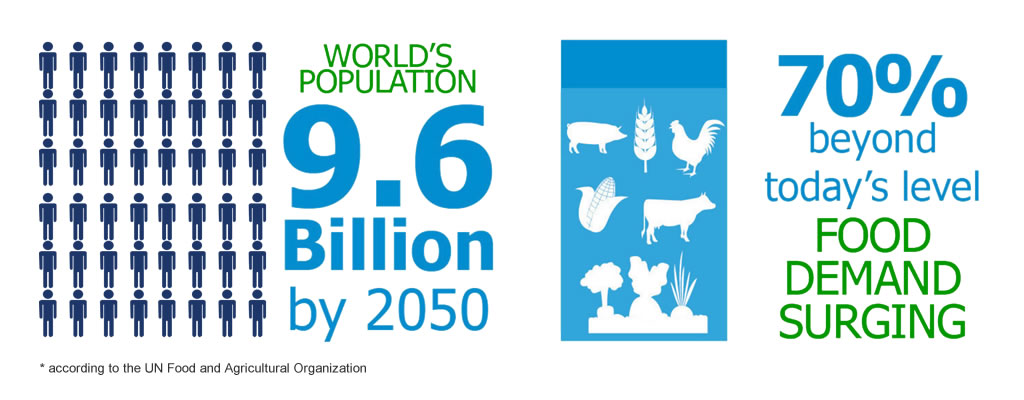
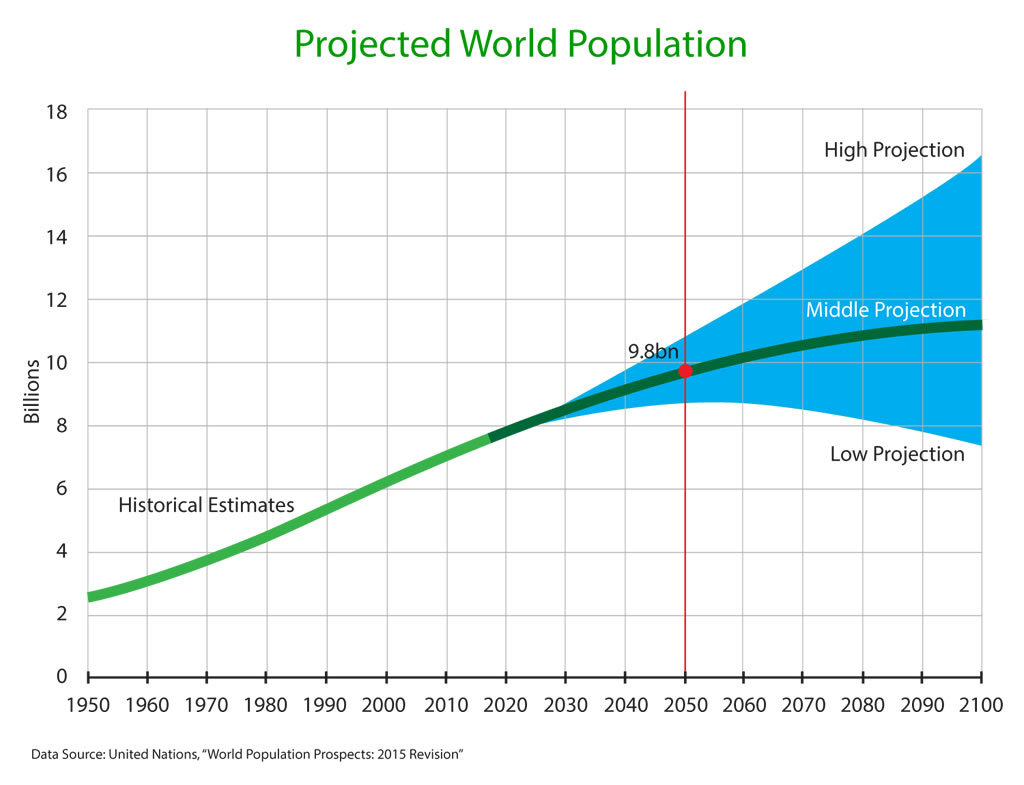
According to the "2012 revision of the official United Nations population estimates and projections", the world population of 7.2 billion in mid-2013 is projected to increase by almost one billion people within the next twelve years, reaching 8.1 billion in 2025, and to further increase to 9.6 billion in 2050 and 10.9 billion by 2100 (United Nations, 2013).

Aggregate meat consumption increased almost 60% between 1990 and 2009, from 175,665 thousand tonnes to 278,863 thousand tonnes, driven in part by the growing world population (Henchion et al., 2014).
Meat consumption will increase because of the growing world population in the period 2005/2007 to 2050. However, the increase will be larger because the capita meat consumption is predicted to increase in this period by 26%. This projection is 50% in developing countries.
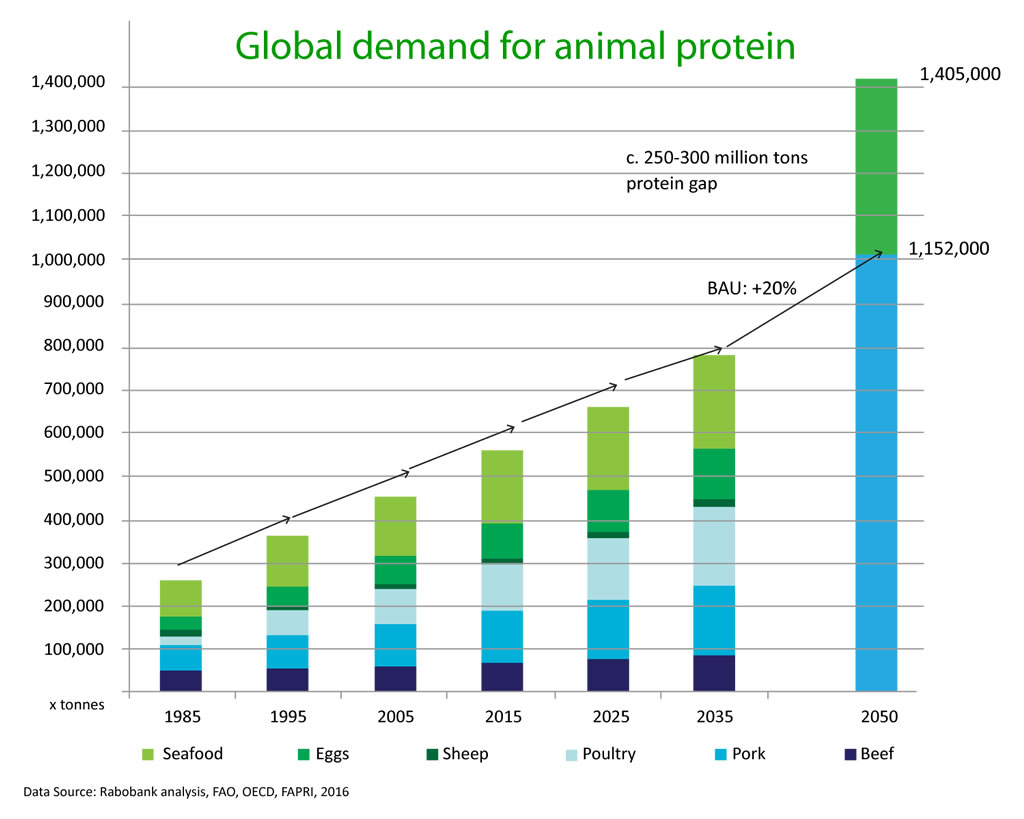
When China and Brazil are excluded, who both account for 56% of meat consumption in developing countries, the increase is 76%. This calculation indicates that other factors, in addition to population growth, are influencing demand. This outcome is very likely due to increased welfare. For example, South Asia"s middle class will go from under one million in 2012 (less than 0.1% of the population) to some 660 million (29% of the population) in 2050 (Table 6.3 in Van der Mensbrugghe et al., 2011). Global population growth, rising incomes and increased urbanization in developing countries stimulate the growth for animal food source also because populations adopt more Westernized diets (Turk, 2016).

Of total available agricultural land, about 68% (3.3 billion ha) is under permanent meadows and pastures (http://www.fao.org/faostat). Another 10% (500,000 ha) is used as cropland to produce animal feed (Steinfeld et al., 2006); so in total, 78% of all agricultural land is used to produce livestock. Total meat production from 2005/2007 to 2050 is expected to increase from 258 to 445 million tonnes (57%) (Alexandratos and Bruinsma, 2012).
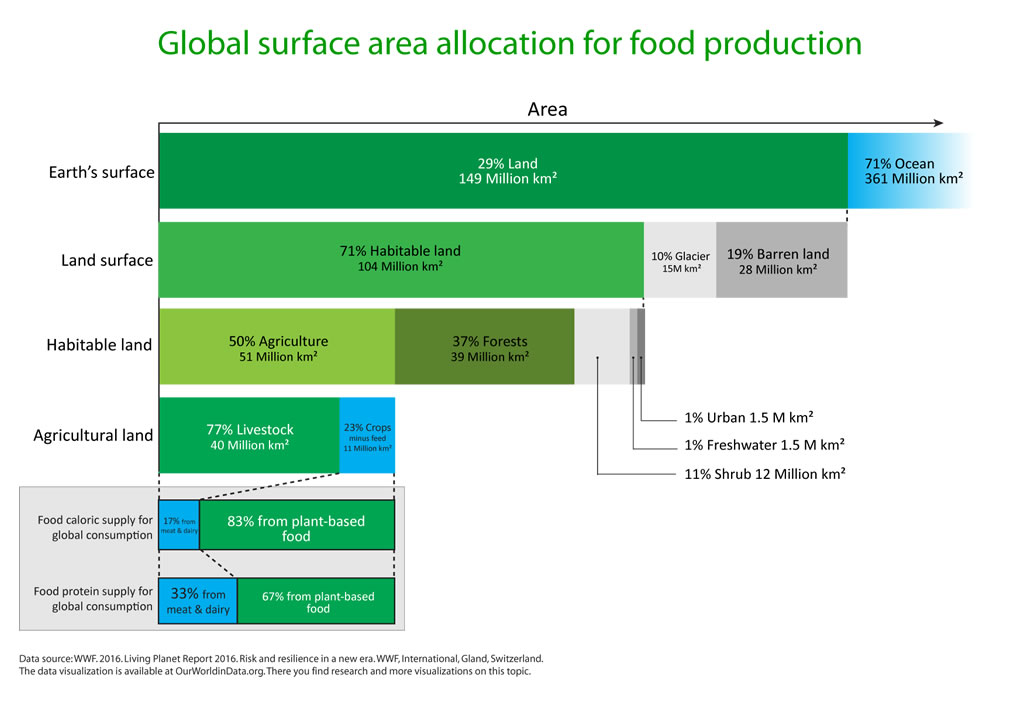
How can this be accommodate when so much land is already used for livestock? When no additional land is being added for pasture, marginal lands are now the frontiers and will become quickly exhausted (Turk, 2016). Growth of crop yields has slowed considerably. Studies have shown global crop production needs to double by 2050 to meet the projected demands from rising population, diet shifts, and increasing biofuels consumption. Production of four key global crops, maize, rice, wheat, and soybean, that currently produce nearly two-thirds of global agricultural calories, will increase between 38 and 67% by 2050, which is far below what is needed (Ray et al., 2013). Is the lower growth potential, together with modest increases in cultivated land, sufficient to meet the increased requirements? Climate change is another risk, which may affect the production potentials of agricultural resources in many areas of the world. These factors together indicate we need to find solutions to satisfy the demand for animal protein.
Fishmeal Replacement
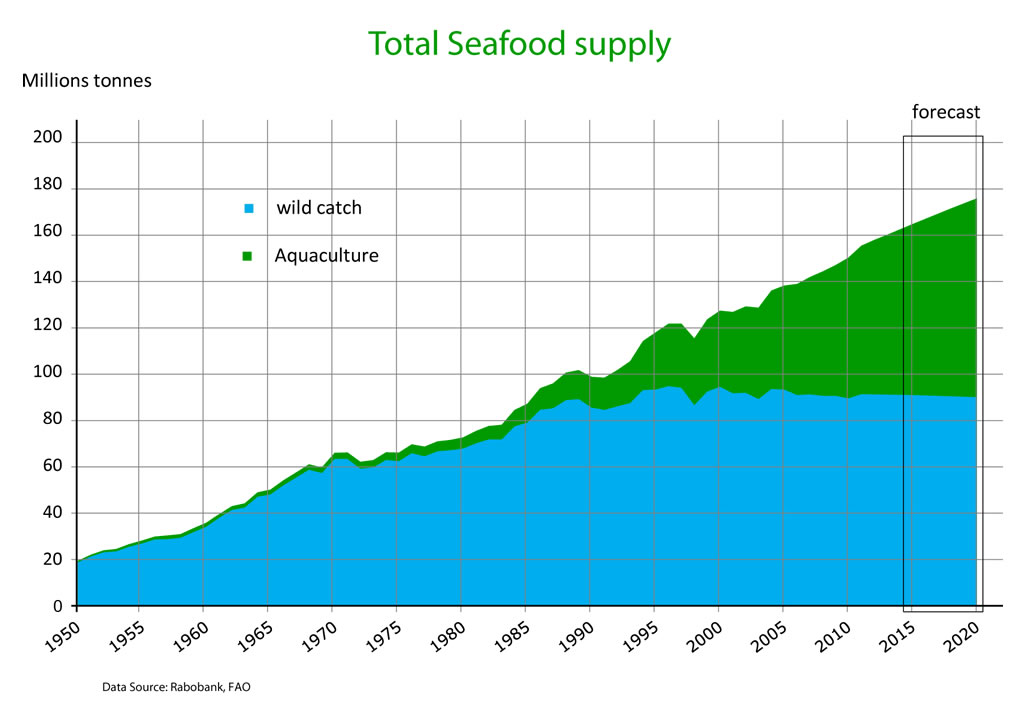
In 2014, the aquaculture sector's contribution to the supply of fish for human consumption overtook that of wild-caught fish for the first time, and now provides half of all fish for human consumption (FAO, 2016). Aquaculture provided only 7 % fish for human consumption in 1974; this share had increased to 26% in 1994 and 39% in 2004. In 2014, world aquaculture production of fish accounted for 44.1% of total production from capture fisheries and aquaculture (including for non-food uses).
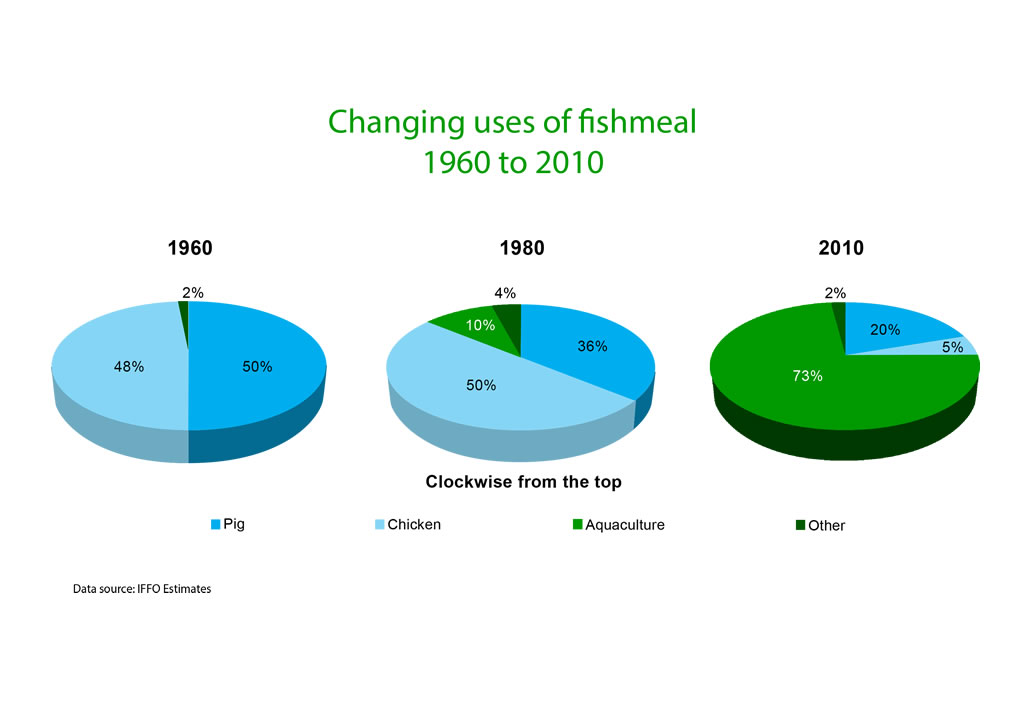
In 2014, 21 million tonnes was destined for non-food products, of which 76 % (15.8 million tonnes) was reduced to fishmeal and fish oil. Fishmeal is a commercial product mostly made from fish containing a high percentage of bones and oil, and is usually deemed not suitable for direct human consumption. A small portion is made from the bones and offal left over from processing fish used for human consumption. The larger portion is manufactured from fish stock of wild-caught, small marine fish. Many different species are used for fishmeal and fish-oil production, with oily fish, especially anchoveta, the main group of species utilized. Fishmeal is the crude flour obtained after milling and drying fish or fish parts, while fish oil is usually a clear brown/yellow liquid obtained through the pressing of the cooked fatty fish.
Fishmeal and fish oil are used to feed poultry, swine, and farmed fish. Fishmeal production peaked in 1994 and has followed and overall declining trend since the (FAO, 2016). Prices of fishmeal have remained below 1000 US$/metric tonnes from 1987 to 2006, and after 2012 have peaked above 2,000 US$/metric tonnes (https://www.indexmundi.com/commodities/?commodity=fish-meal&months=360). This partly due to overexploitation of fish stocks. Today, 31% of commercially important assessed marine fish stocks worldwide are overfished (FAO, 2016). Fishmeal used to be a cheap commodity included in animal feed. It is regarded as an excellent source of proteins, it is easily digestible, has an excellent composition of essential amino acids; it is also a good source of vitamins (riboflavin, niacin, vitamins A and D) and minerals (calcium, phosphorus, iron, zinc, selenium and iodine) product (Olsen and Hasan, 2012). The rapidly growing aquaculture industry using fishmeal as a major protein source in compounded feed has strongly contributed to increased demand and prices for this product, and for that reason massive research is conducted to identify alternative more sustainable plant and animal protein and lipid sources (Leschin-Hoar, 2016; Olsen and Hasan, 2012; Rana et al., 2009; Tacon et al., 2009).